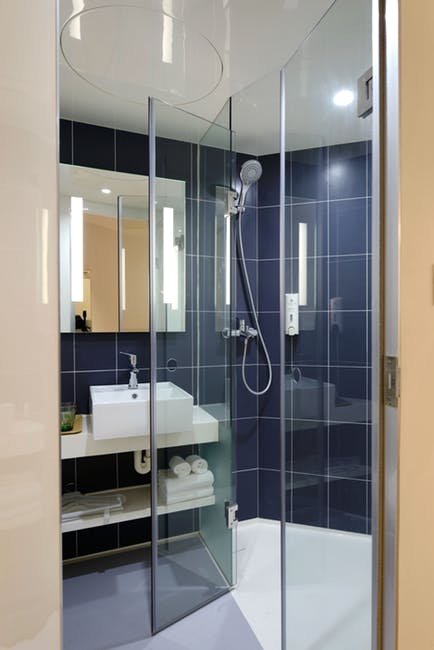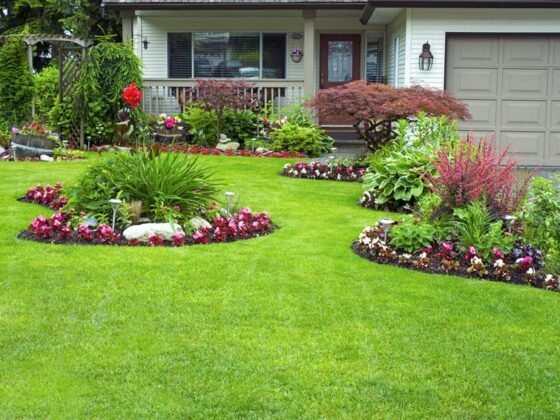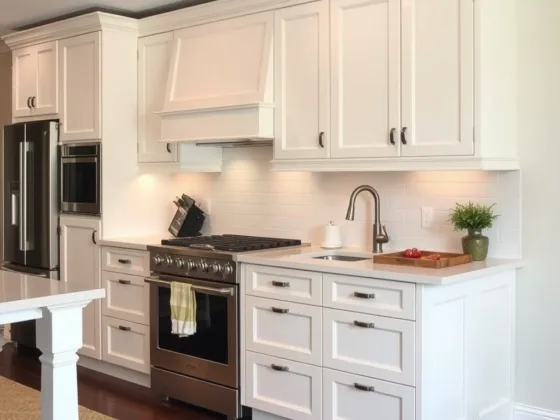Table of Contents Show
Did you know that updating your bathroom is one of the best ways to increase the value of your home?
That’s right and choosing the right shower doors is an important part of creating your perfect bathroom.
You’ll need to weigh up the pros and cons of frameless and framed shower doors, then work out which opening style will work best for your space.
Confused about what to do?
Keep reading for a simple guide to choosing the best shower doors for your home.

Read Also:
1. Frameless Doors
Frameless doors are extremely desirable at the moment and will give your bathroom a modern, seamless look.
They’re made of durable tempered glass that’s completely solid, with no metal frame around the edges. This makes them ideal if you want to show off bespoke tiles or stonework inside the shower.
They can also help small rooms feel larger, or help make the most of unusually-shaped spaces.
Frameless doors are more expensive than traditional, framed doors, so they won’t be suitable for every budget.
2. Semi-Frameless Doors
If you like the look of frameless doors but can’t quite justify the cost, semi-frameless doors are a good compromise.
The structure of your shower will be fully enclosed in metal, but the door itself will be frameless or semi-frameless when opened. This gives a sleek look without the cost of removing the frame entirely.
It also works well if you don’t enjoy the 100% glass look and want your shower doors to look a bit more solid.
3. Framed Doors
Framed doors are made of tempered glass with a solid frame the entire way around. They’re usually the most affordable option, but that doesn’t mean they can’t look stylish.
Opting for thick, dark frames is a great design choice if you’re going for an industrial look. A grey or black frame will offset brighter-colored walls and tiles nicely.
It’s possible to choose discreet frames in lighter shades if you’re going for a more minimalist look.
Match the material of your shower door frame to other fixtures in your bathroom for a luxurious, contemporary look. You could choose gold, silver, chrome, or copper.
Framed doors tend to be made of thinner glass, which works well in smaller bathrooms. The thinner glass also contributes to keeping the price low.
Sliding, pivoting, and bi-fold shower doors can all be framed in a range of styles.
4. Bathtub Enclosures
Do you have a shower that’s positioned over your bathtub?
If you don’t want to enclose the entire tub in glass, a static enclosure that covers half the bath is a great option. It’ll stop water splashing onto the floor when you shower, but won’t make your bathroom feel small.
If you want a little extra splash protection, choose a sliding enclosure which can be extended while you shower. When not in use, you can push it back to create the impression of more space.
Alternatively, add a shower curtain rail that extends beyond the glass enclosure. This is a great option if you want to avoid splashes near the head of the shower but also enjoy the look of a shower curtain.
5. Sliding Doors
Once you’ve decided whether to opt for frameless, semi-frameless, or framed doors, you’ll need to decide how they should open and close.
Sliding doors help maximize space, making them perfect for smaller bathrooms. The glass panels get anchored to a fixed metal track, rolling smoothly back and forth as needed.
Sliding glass doors look modern and minimalist, pairing well with the frameless style. They’re ideal if you’re keen to highlight the inside of your shower.
Sliding doors are available in a wide range of sizes, so they’re suitable for large and small shower enclosures, and can even be made bespoke to fit your bathroom.
It’s worth bearing in mind that frameless doors can be harder to clean than some of the other styles as there’s usually a small section where the two doors overlap, even when open.
6. Hinge Doors
Hinge doors, also known as pivoting doors, open outwards just like a traditional door would.
They’re a classic option, commonly installed on smaller shower enclosures. They don’t save as much space as sliding doors but this isn’t usually an issue unless your bathroom is particularly tiny.
They also work well on large enclosures with built-in benches. The door doesn’t have to cover the entire front of the enclosure — it can be part of a larger glass panel.
Pivoting doors can be either framed or frameless, so they work for a range of budgets and design styles.
You’ll be able to choose a handle which matches the rest of your fixtures which will make your bathroom look well-finished.
If you choose a pivoting door style, be sure to measure properly before installation to ensure that there’s room for the door to open fully without hitting anything.
7. Bi-Fold Doors
Bi-fold shower doors are a good option if you don’t want a pivoting door but do want a large space to enter the shower via.
They fold neatly when opened, saving space while still giving you plenty of room to step in and out of the shower. They’re a popular choice in en suites and smaller guest bathrooms.
They have a modern look and are easy to clean and maintain. They’re usually framed, so are a good option if you’re on a budget.
Where to Shop for the Best Shower Doors
If you want to find the best shower doors for your home, you might need to shop around a little.
Shopping online will give you the greatest range of options, but sometimes there’s no substitute for actually going to a showroom and seeing how the doors look in the real world.
Take your time and don’t rush into a purchase before you’re certain it’s right for your bathroom. You might think that a certain style of door is perfect, then change your mind once you see it in person.
Want more top tips on home improvement? Visit the remodeling section of our blog today.









